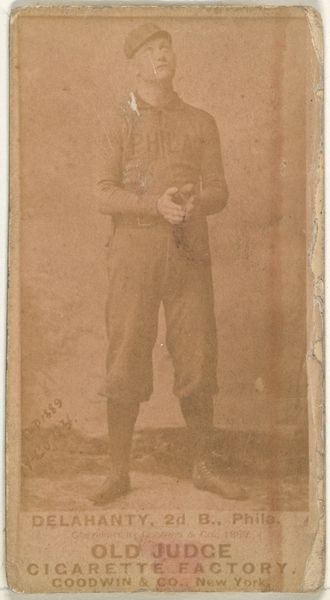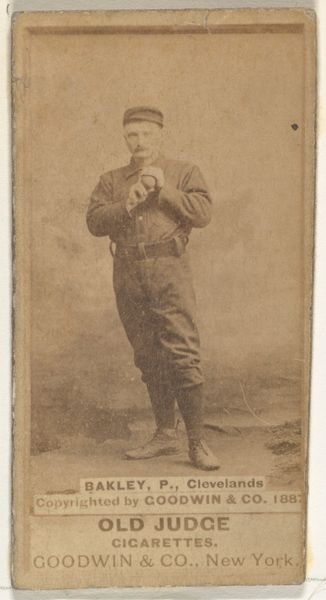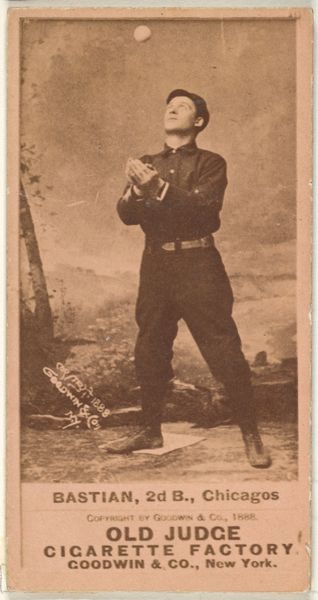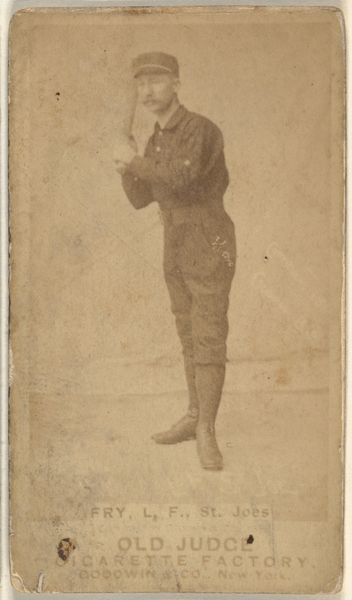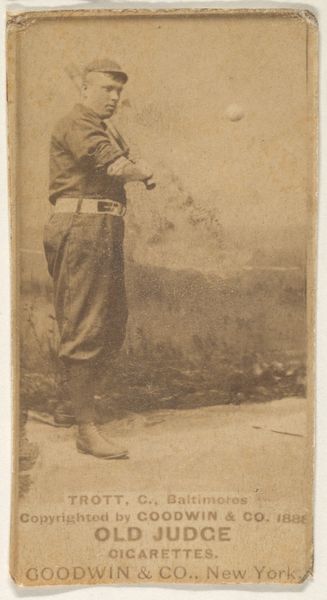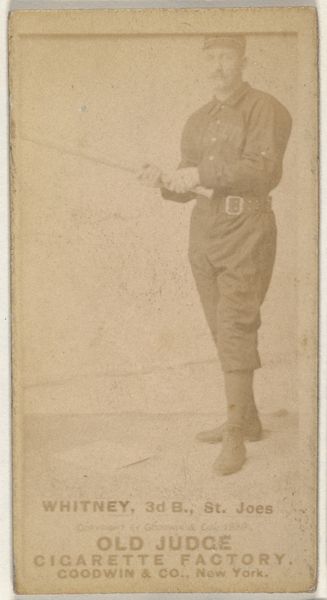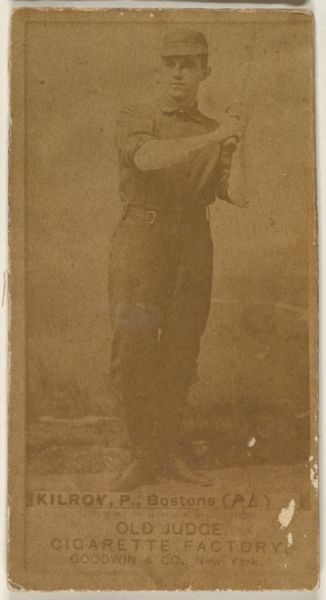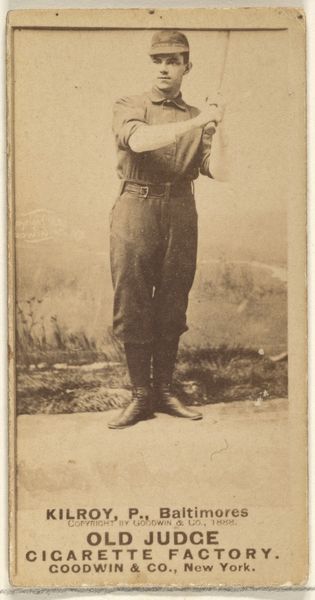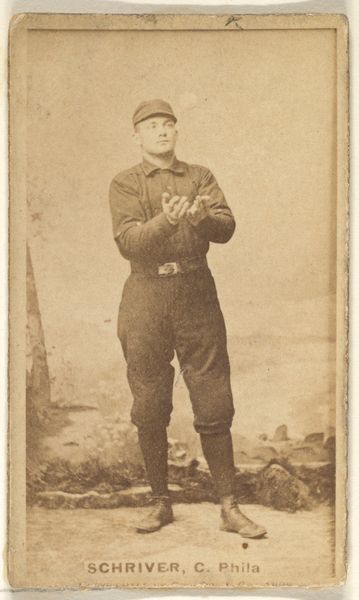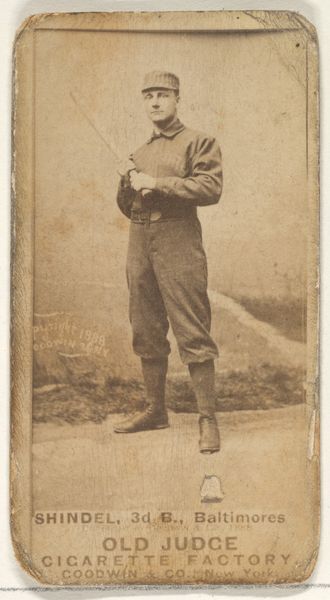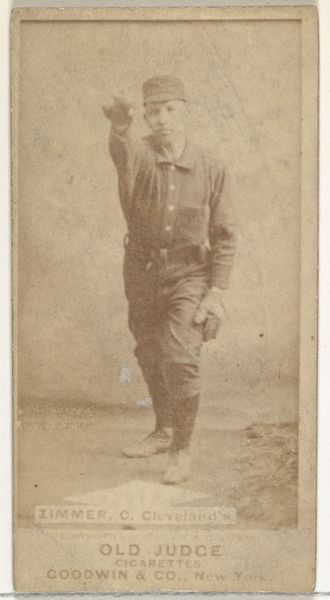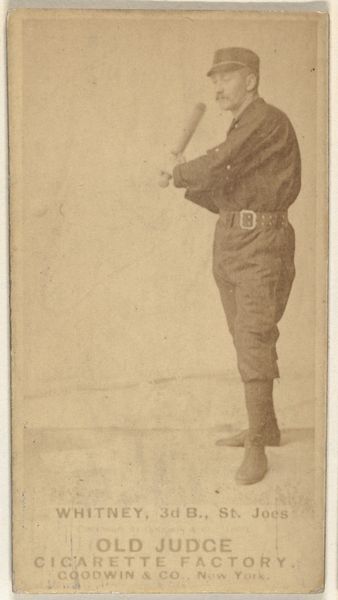
William Frederick "Pop" Schriver, Catcher, Philadelphia, from the Old Judge series (N172) for Old Judge Cigarettes 1888
0:00
0:00
drawing, print, photography
#
portrait
#
drawing
# print
#
impressionism
#
baseball
#
photography
#
men
#
genre-painting
Dimensions: sheet: 2 11/16 x 1 3/8 in. (6.9 x 3.5 cm)
Copyright: Public Domain
Editor: Here we have a print titled "William Frederick 'Pop' Schriver, Catcher, Philadelphia," created in 1888 by Goodwin & Company as part of the Old Judge Cigarettes series. The sepia tone gives it such an antiquated, almost ghostly feeling. The texture also makes it look like some elements are scratched away from it. What catches your eye about this piece? Curator: What arrests my attention foremost is the almost diagrammatic quality of the portrait. It offers a rigorous study in figure and ground. Note how the pose and slightly averted gaze generate a visual tension. This asymmetry introduces dynamism, countered by the rectangular format and tonal uniformity, all contributing to the aesthetic impact of the work. The damage also brings attention to the print itself. What could this tell us? Editor: That’s a fascinating take. I was so focused on the subject, I almost missed the effect of the visual balance. The tension that exists gives it almost a life-like dimension beyond a typical portrait! I wonder how this was different from a typical photograph of the time. Curator: The very imperfections in the print—scratches and tonal shifts—disrupt any easy reading, thereby pushing the work towards abstraction. Can we reconcile the photograph with its disruption? Editor: Absolutely! These imperfections, perhaps unintentional, become intrinsic elements of the artwork itself, enhancing its textural and visual interest, in opposition to how the image itself would’ve wanted to portray what might have been at the time a kind of formal or heroic imagery. Curator: Precisely. The interplay of subject and the surface transforms a commercial image into a complex aesthetic object worthy of contemplation and analysis. Editor: I’ll never look at a baseball card the same way again! This has highlighted for me how critical close visual analysis is, moving beyond just the subject matter and history of an image.
Comments
No comments
Be the first to comment and join the conversation on the ultimate creative platform.
